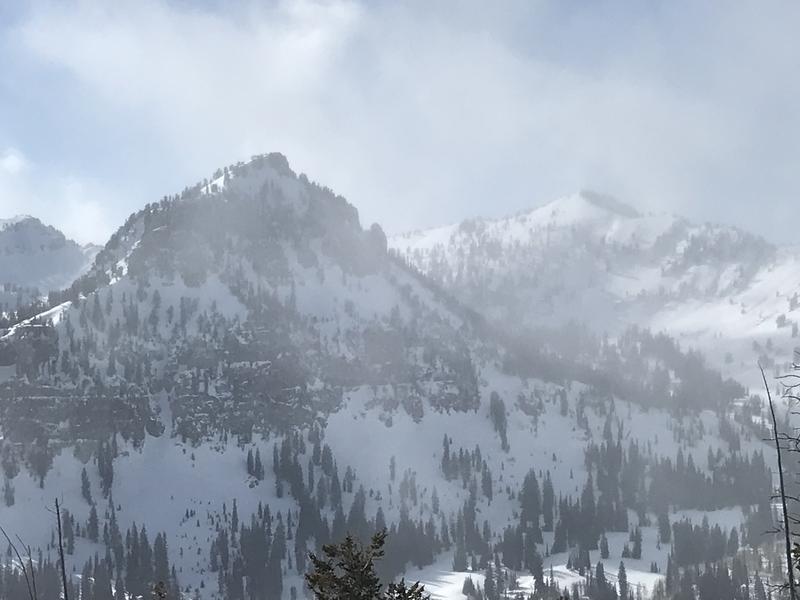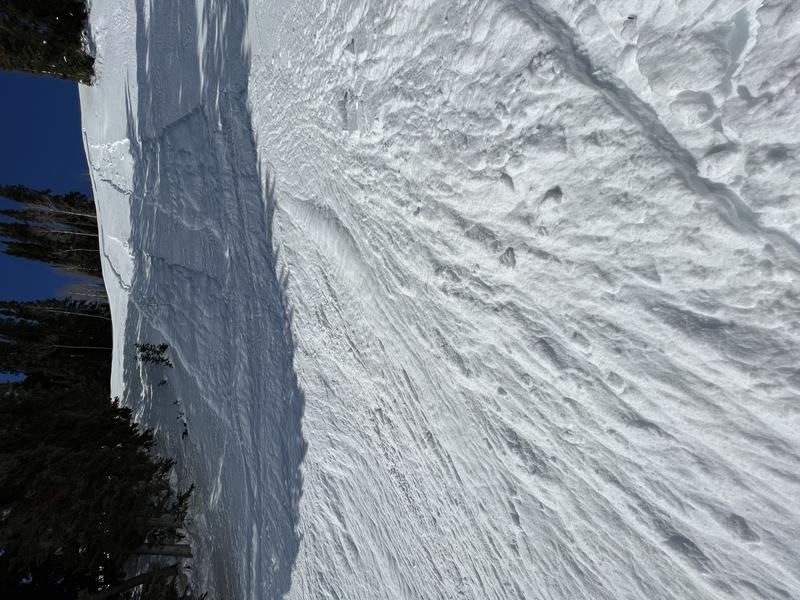Now is a great time to take advantage of nice weather and LOW avalanche danger in the backcountry, so get out there and explore the mountains with your family and friends.
The snow is generally stable across the Logan Zone, and it's been over a month since we've seen any significant avalanche activity. We've been finding the best riding conditions on lower-angled slopes in sheltered, shaded terrain. As you'd expect after a month of dry weather conditions, variable snow surface conditions are found in most places, ranging from soft and shallow recrystallized powder to breakable and bulletproof crusts.
We've found some nice shallow "powder" in sheltered lower angled terrain.
The 8400' Tony Grove Snotel reports 22°F, and there is 64 inches of total snow containing 106% of normal SWE for the date. Winds out of the northwest are blowing around 20 mph this morning at the 9700' CSI Logan Peak weather station. It will be sunny in the mountains again today, with a high temperature at 8500' around 36°F and moderate west winds. Tonight, temperatures will drop to around 14°F, with 11 to 13 mph west winds. Expect high temperatures tomorrow around 42°F, and sunny skies again with a 11 to 17 mph breeze from the west-southwest. The same dry weather will continue through the weekend, but there is a hint of a little snow possible in the Logan Zone next week.
You can find nice smooth, shallow, recrystallized surface snow or "loud powder" in sheltered areas, and a wide variety of crusts and thin layers of facets elsewhere.
Yesterday in steep terrain in the Bear River Range a party of riders triggered a few loose avalanches or sluffs involving 10" to 12" of very loose sugary faceted surface snow. These were manageable but indicate potential for larger avalanches if we do ever get some significant snow accumulations.
On a sustained slope, this kind of avalanche could be a problem if you get swept into trees or other terrain traps below like gullies or benches...











